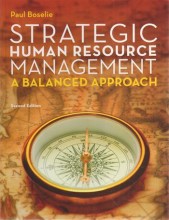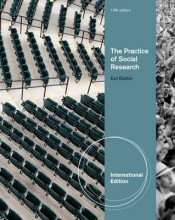Human Resource Metrics and Measurement
29 important questions on Human Resource Metrics and Measurement
What is HRA (1970-1980)?
How can we catagorize the three types of outcomes within the distal or proximal outcomes?
2. HR-related outcomes are proximal outcomes, because the effect of the intervention can directly be measured, because they're closer to the intervention.
What is a KPI?
- Higher grades + faster learning
- Never study anything twice
- 100% sure, 100% understanding
What are the three main reasons to measure HR?
2. Speaking the same language
3. Convincing the rest of being part of the rest.
A. Measurement
B. Valorisation (how much is this practice actually going to bring me?) Often in terms of money.
What does an ideal HR measurement system take into account?
What are the main differences of Hard and soft outcomes? In terms of:
- rigide
- indication past vs future
- distal vs proximal
- reliability / representative?
Differences:
Hard HR
- More solid/rigid
- More indicative of the past
- Distal
- Reliable ?
Examples: labor productivity, efficiency ratio's, labour costs, sales volumes and net profits.
Soft HR
- More interpretation is needed
- Indicative for the future
- Proximal
- Representative / valid ?
Examples: employee satisfaction, commitment, engagement, turnover intention.
Why is measurement crucial for organizations?
What are the 3 outcomes (output) we can balance?
- Financial outcomes (Shareholders/investors)
- Organizational outcomes (Organization)
- Hr-related outcomes (employees)
Based on these 3 outcomes you can judge a company's performance. There are strong relations
between the three, but they are not always aligned, because there are different stakeholders. So an ideal HR measurement system takes these interests into account.
What is HRA called nowadays and what does it focusses on?
Focus on measuring and monitoring interventions
When we talk about measuring, what is the division that we make first?
- Output
- Input
To measure specific practices (input) we can ask questions on 5 different topics
- Presence
- Intensity
- Importance
- Satisfaction
- Coverage
What is the focus of HR analytics?
So why measure? (Making the added value of HR measurable)
- Making more effective (HR) management decisions (evidence-based decision making)
- Convincing others (evidence) in making decisions
- Setting up new interventions / shutting down interventions
- Assessing effectiveness of (HR) interventions Tracking /monitoring / insight / predict / modify
Human Resource accounting (HRA) (70s& 80s)
Balanced Score Card (Kaplan and Norton, 1992}
The BSC is moving from the accounting part
to the strategy part. Which are linked and should be balanced
- Financial (accounting): How do we look to our shareholders? most important
- External/customer: How do customers see us?
- Internal business: What must we excel at?
- Knowledge and growth including innovation and learning. More future focused
HR scorecard Becker (2001)
contains 5 key elements :
- The workforce success: has the worktorce accomplished the key strategie objectives?
- The right HR costs: is our total investment in the worktorce appropriate?
- The right types of HR alignment: are the HR practices aligned with the business strategy?
- The right HR practices: have we designed and implemented world class HR management policies?
- The right HR professionals: Do our HR professionals have the skills they need to design a good HR management system?
Paauwe next-generation HR scorecards
included next to the HR function and practices.
- Professional logic: focused on the expectations of line managers, employees, works councils and colleagues of HR departments.
- Strategie logic: incorporates the expectations of the board of directors, CEO, shareholders and financiers.
- Societal logic: focused on the expectations of works councils, trade unions, the government and other interest groups or stakeholders relevant to the organization.
- Delivery logic: represents the cost-effectiveness of the possible
Disadvantage soft outcomes
Strategical balance theory {SBT) :
Paauwe: unbalanced organizations (employee and employer interests are disbalanced) can restore the balance through:
- Creating cost-awareness among employees
- Information about the business activities etc.
- Putting emphasis on service quality standard to customers.
2. When there are low employee interests and high employer interests: (more often)
- Providing employee autonomy, training and development.
- Good communication
- Employment security
Paauwe: unbalanced organizations (employee and employer interests are disbalanced) can restore the balance through:
- Creating cost-awareness among employees
- Information about the business activities etc.
- Putting emphasis on service quality standard to customers.
2. When there are low employee interests and high employer interests: (more often)
- Providing employee autonomy, training and development.
- Good communication
- Employment security
Starovic and Marrr (2003) define intellectual capital in terms of:
2. Relational capita!: brands, customers and customer loyalty
3. Organizational capital: patents, copyrights, corporate culture, management philosophy and
networking systems
Wright (2001) stated that there are three types of capital
- Human capital: reflected in knowledge, skills and abilities of the employees.
- Social capital: reflected in the valuable social networks and relationships between employees within the organization and social networks of employees with the outside world.
- Organizational capital: embedded in the practices and systems in place
Employee commitment (Allen & Meyer)
- Affective: involvement in and emotional attachment to the organization. (desirable)
- Normative: attachment because of perceived moral obligation.
- Continuance: attachment because of a lack of alternatives.
- Often because of the golden cage: excellent compensation
Perceived employee justice
- Distributive justice: people's perceptions of ou tcomes or rewards and the way thatthey are allocated.
- Procedural justice: fairness of the procedures used to determine outcome distributions or allocations. (perception, attachment)
Putting people in a controlled environment (Reliability and validity)
One measurement of organizational outcomes is legitimacy. What is the difference between pragmatic, moral and cognitive legitimacy?
2. Moral legitimacy; an organization judges its actions on responsibility because she feels obligated to.
3. Cognitive legitimacy; within an organization there is legitimacy in the business culture, strategy and structure
How can we measure organizational outcomes?
2. Quality
3. Flexibility (numerical, functional, mental)
4. Legitimacy
- Innovation
The question on the page originate from the summary of the following study material:
- A unique study and practice tool
- Never study anything twice again
- Get the grades you hope for
- 100% sure, 100% understanding
































